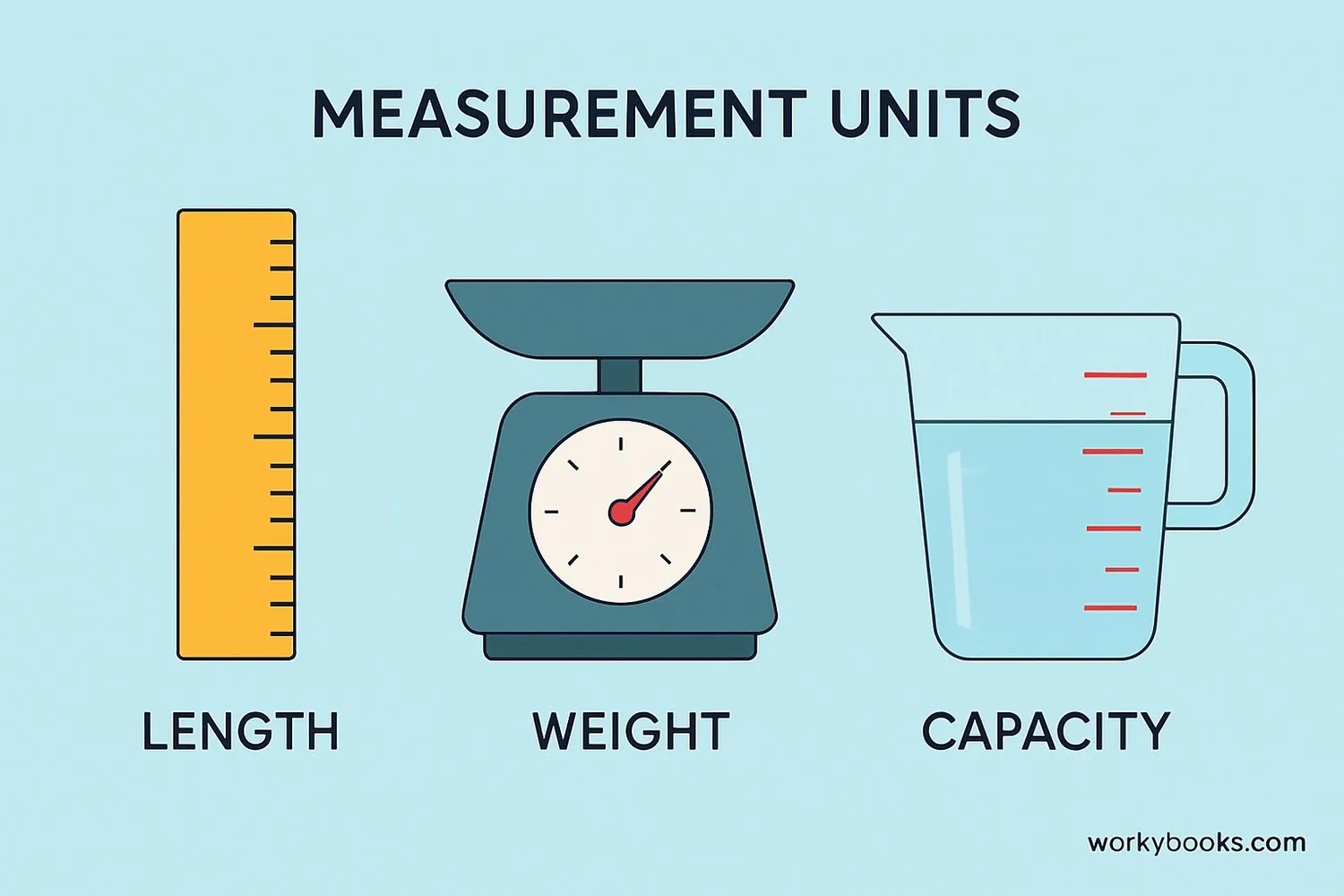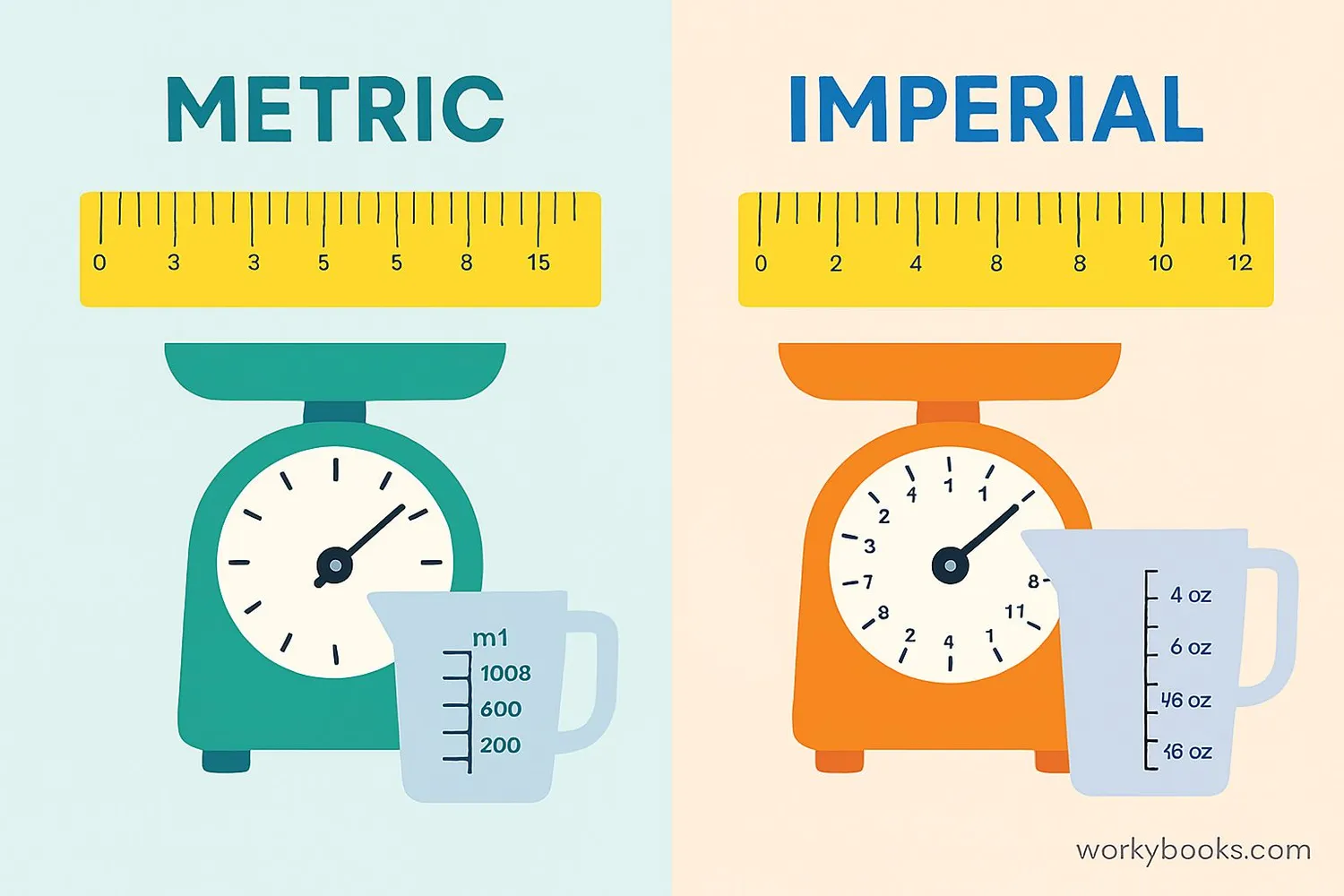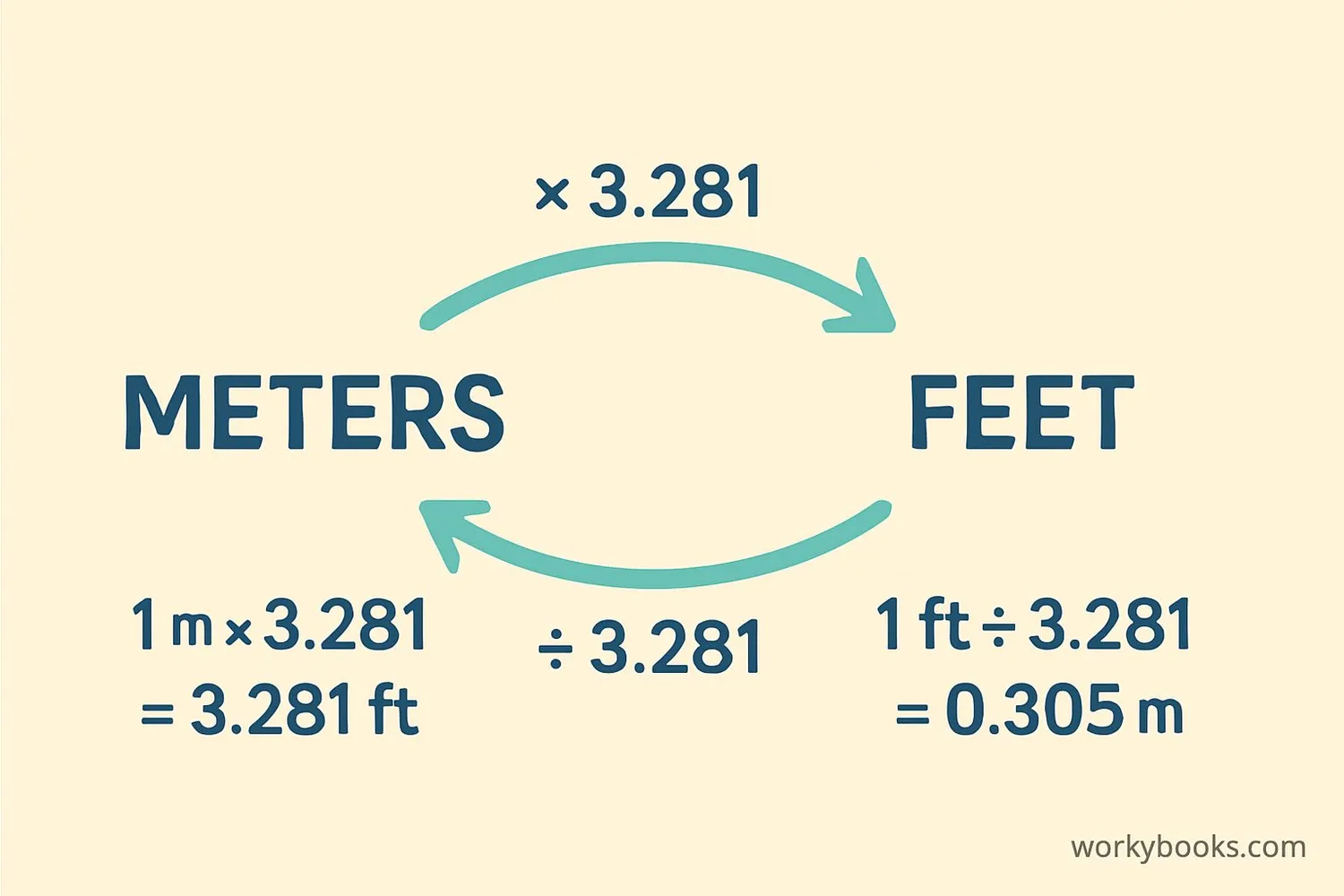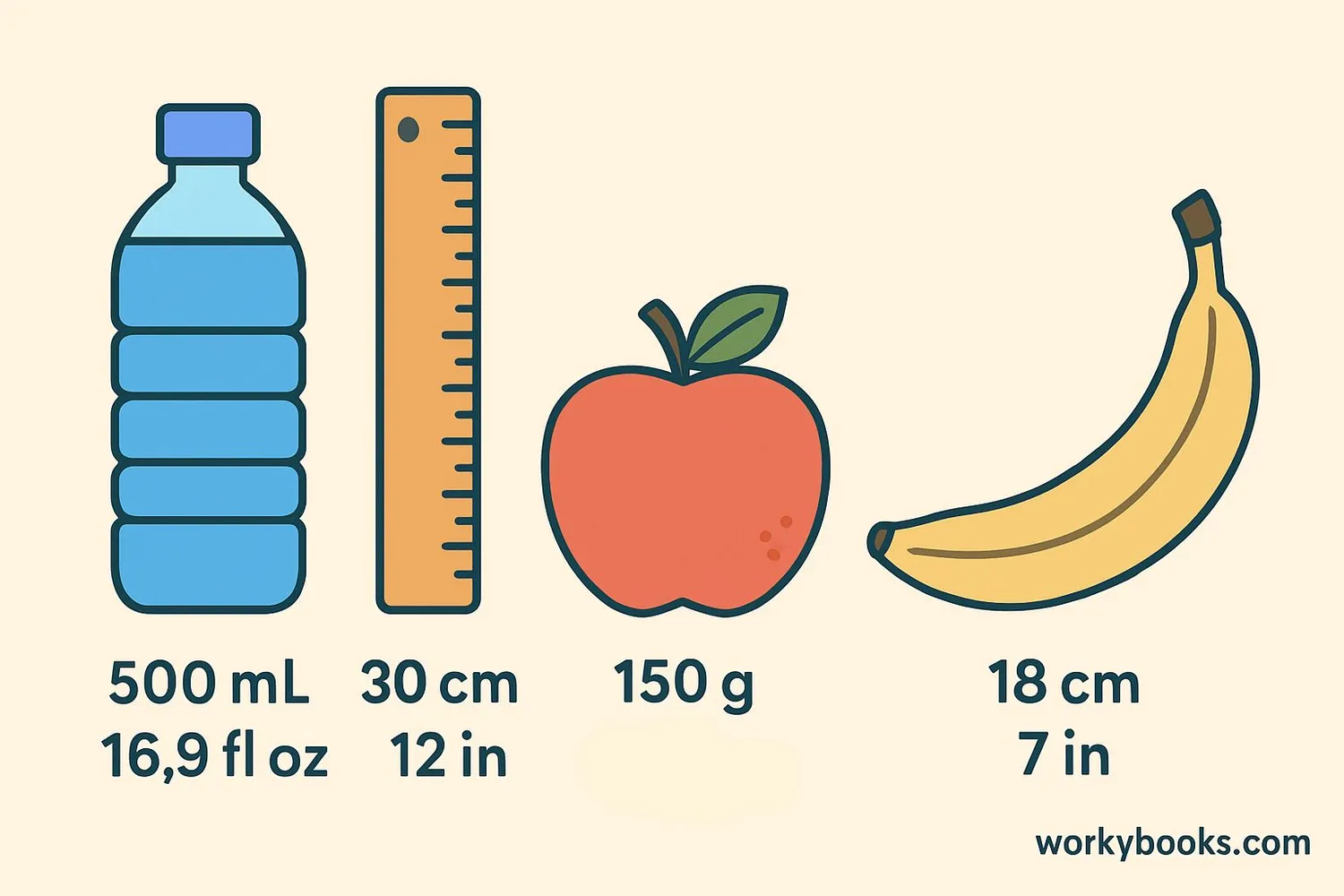Unit - Definition, Examples, Quiz, FAQ, Trivia
Learn about measurement units with clear explanations, examples, and practice activities
What is a Unit?

A unit is a standard amount used to measure or count something. It helps us describe how much, how long, how heavy, or how big things are in a way everyone can understand.
Think of units like building blocks for measurement. Just like you count blocks to know how many you have, we use units to measure different things:
• Length: How long something is (centimeters, inches, feet)
• Weight: How heavy something is (grams, ounces, pounds)
• Capacity: How much something can hold (liters, cups, gallons)
Without units, we couldn't compare measurements or share information accurately. Units give us a common language for measurement.
Key Concept
A unit is a standard amount used for measurement. It helps us describe quantities clearly and compare measurements.
Types of Measurement Units

There are two main systems of measurement units used around the world:
1. Metric System (used by most countries)
• Length: millimeter (mm), centimeter (cm), meter (m), kilometer (km)
• Weight: gram (g), kilogram (kg)
• Capacity: milliliter (mL), liter (L)
2. Imperial System (used mainly in the United States)
• Length: inch (in), foot (ft), yard (yd), mile (mi)
• Weight: ounce (oz), pound (lb), ton
• Capacity: fluid ounce (fl oz), cup (c), pint (pt), quart (qt), gallon (gal)
The metric system is based on multiples of 10, which makes conversions easier. For example:
100 centimeters = 1 meter
1000 meters = 1 kilometer
Remember
Metric units are related by powers of 10 (10, 100, 1000), while imperial units have more varied relationships (12 inches = 1 foot, 3 feet = 1 yard).
Converting Between Units

Sometimes we need to change measurements from one unit to another. This is called unit conversion. Here's how to do it:
Conversion Steps
2. Multiply or divide
To convert between units, you either multiply or divide by the conversion factor.
• To convert larger to smaller units → multiply
• To convert smaller to larger units → divide
Example 1: Convert 3 meters to centimeters
Since 1 meter = 100 centimeters, we multiply: 3 × 100 = 300 cm
Example 2: Convert 500 grams to kilograms
Since 1 kilogram = 1000 grams, we divide: 500 ÷ 1000 = 0.5 kg
Imperial Conversions: These often require memorizing conversion factors
• 12 inches = 1 foot
• 3 feet = 1 yard
• 16 ounces = 1 pound
Common Conversion Factors
| Measurement | Conversion |
|---|---|
| Length | 1 inch = 2.54 cm |
| Length | 1 foot = 30.48 cm |
| Weight | 1 pound ≈ 453.6 grams |
| Capacity | 1 gallon ≈ 3.785 liters |
| Capacity | 1 liter ≈ 33.8 fluid ounces |
Real-World Examples

Let's look at some examples of units in everyday life:
Example 1: A standard sheet of paper is:
• 21.6 cm × 27.9 cm (metric)
• 8.5 in × 11 in (imperial)
Example 2: A bottle of soda might contain:
• 2 liters (metric)
• 67.6 fluid ounces (imperial)
Example 3: A newborn baby might weigh:
• 3.4 kilograms (metric)
• 7.5 pounds (imperial)
Example 4: The distance between two cities might be:
• 120 kilometers (metric)
• 75 miles (imperial)
Notice how the same measurement can be expressed in different units? That's why conversion is important!
Practice Tip
Look at product labels in your home - many show both metric and imperial measurements. Try converting between them!
Unit Measurement Quiz
Test your understanding of units with this 5-question quiz. Choose the correct answer for each question.
Frequently Asked Questions
Here are answers to common questions about measurement units:
Measurement Trivia
Discover interesting facts about measurement units:
Origin of the Metric System
The metric system was created during the French Revolution in the 1790s to replace chaotic local measurement systems with a universal, decimal-based system.
The Kilogram Standard
Until 2019, the kilogram was defined by a physical platinum-iridium cylinder kept in France. Now it's defined using Planck's constant from quantum physics.
Mars Climate Orbiter
In 1999, NASA lost a $125 million spacecraft because one engineering team used metric units while another used imperial units for navigation calculations.
Longest Unit
The largest metric unit of length is the yottameter (1 Ym = 10²⁴ meters). That's about 105,700 light years - farther than across our Milky Way galaxy!


